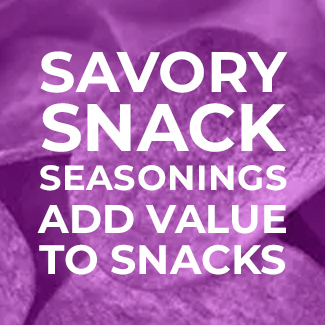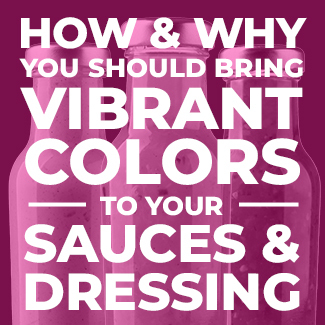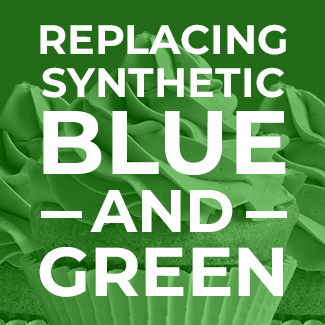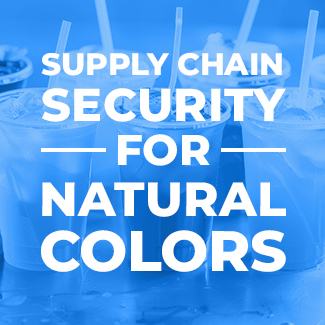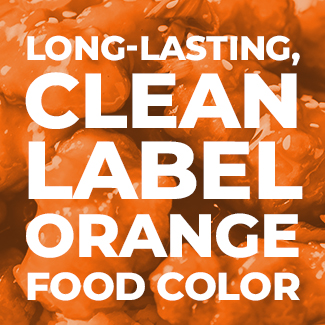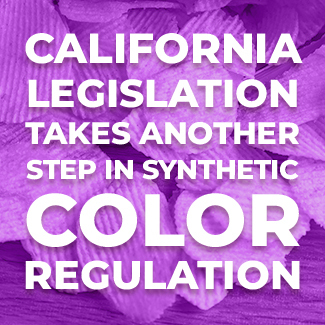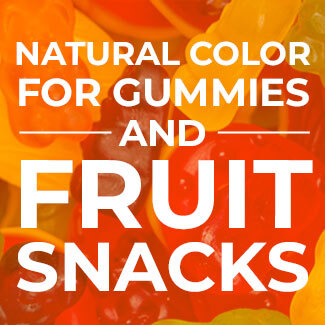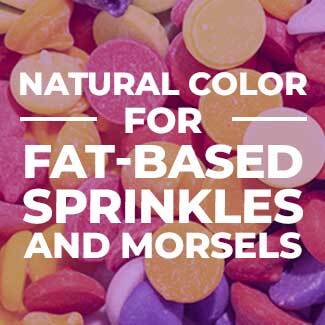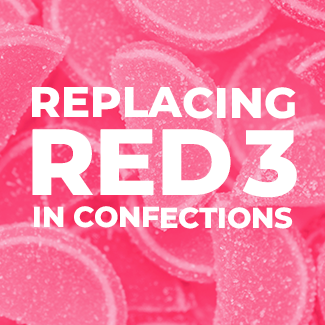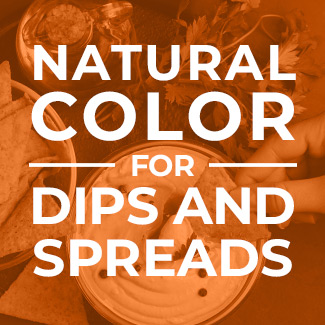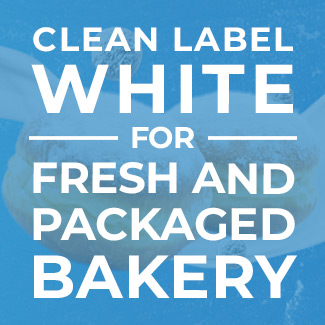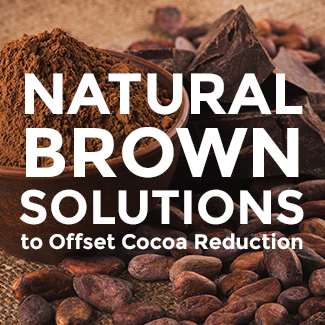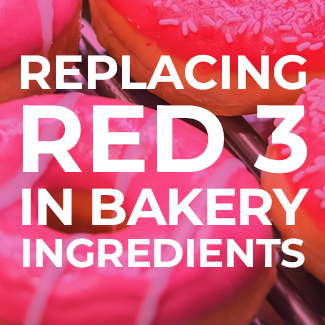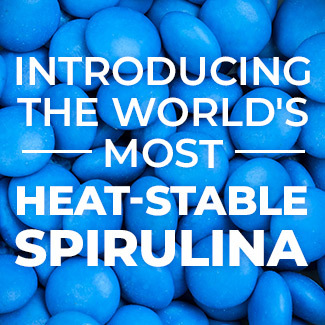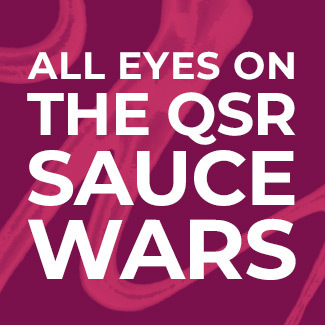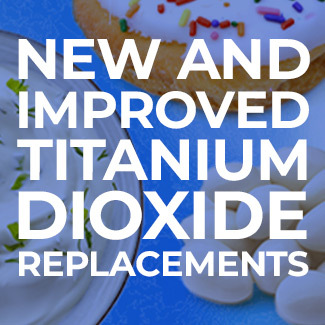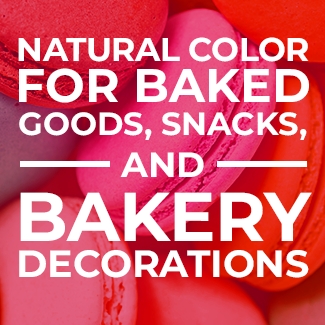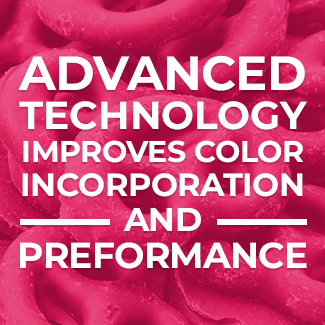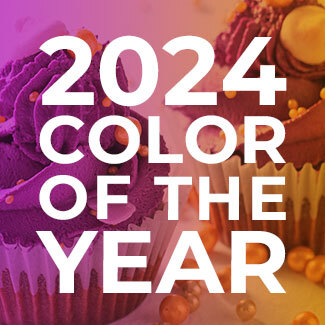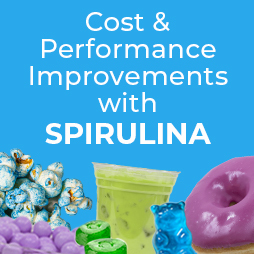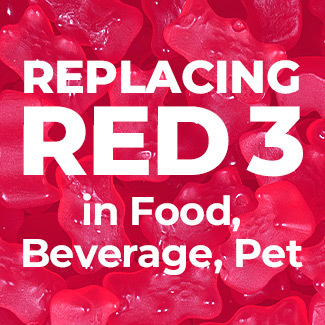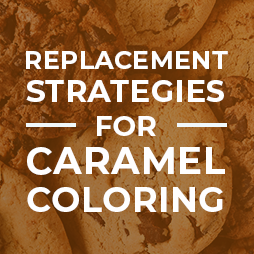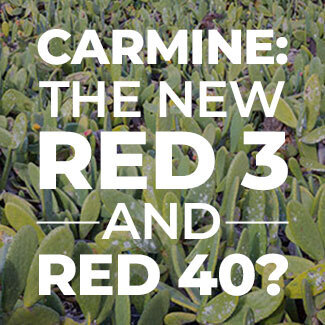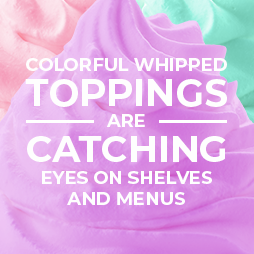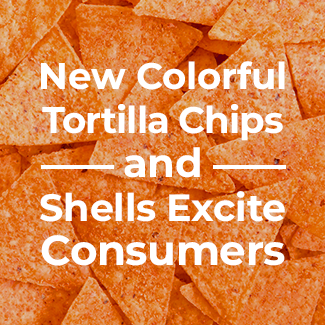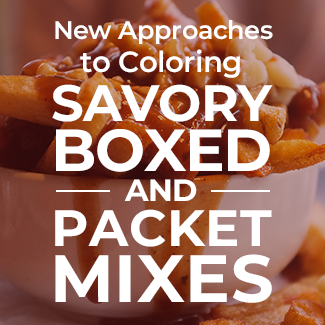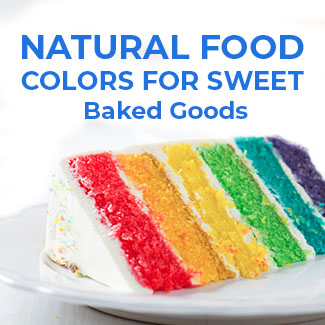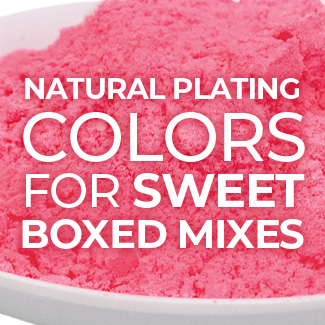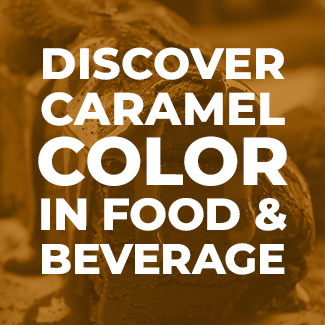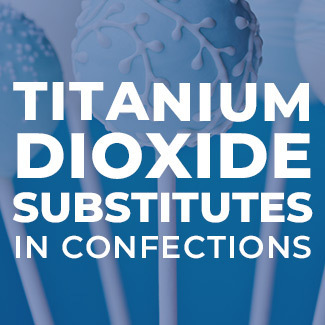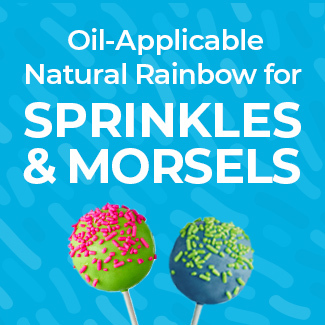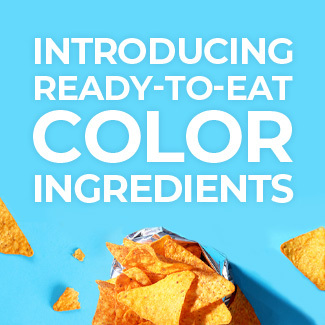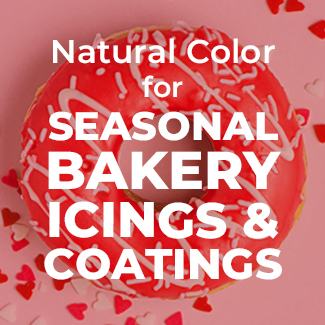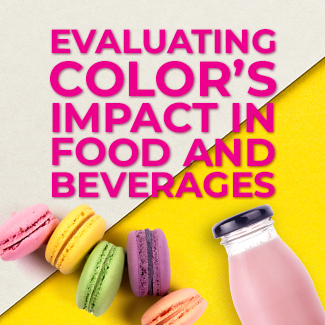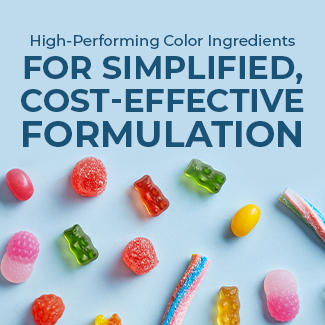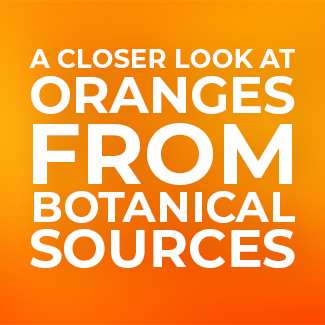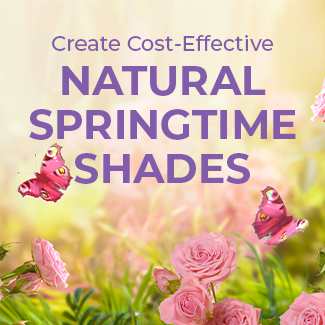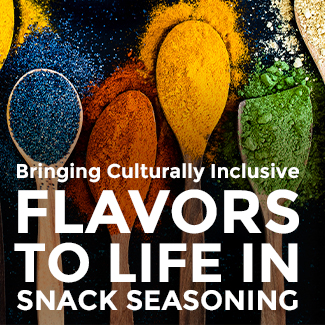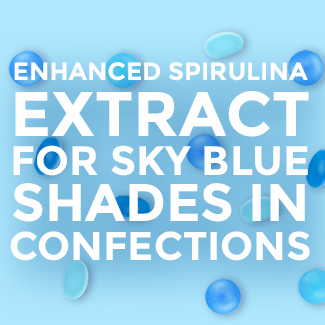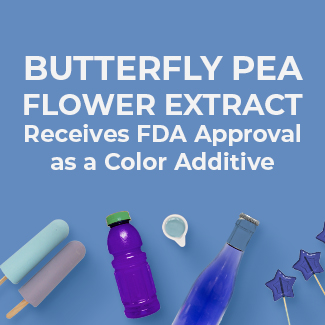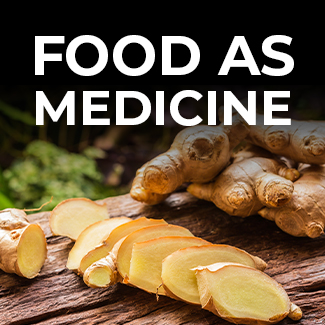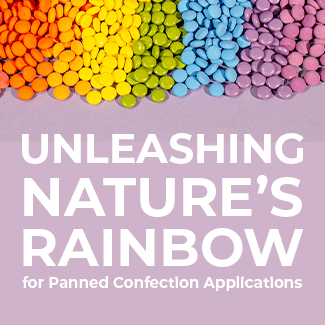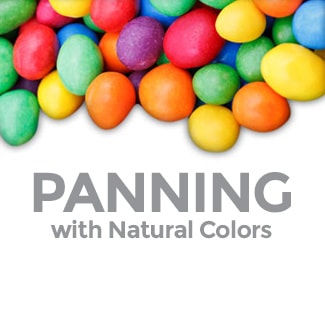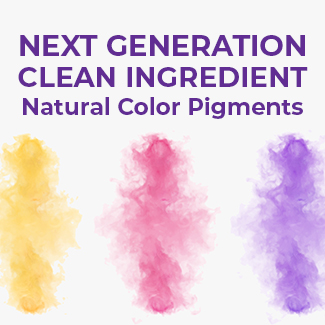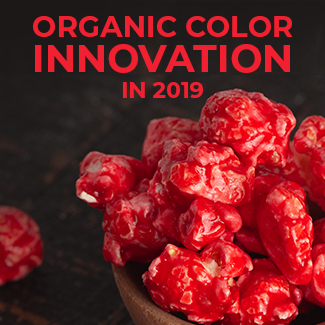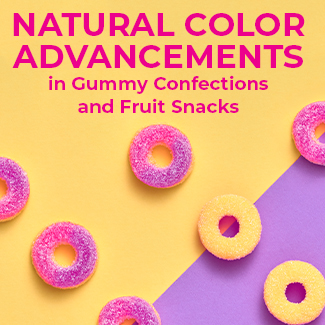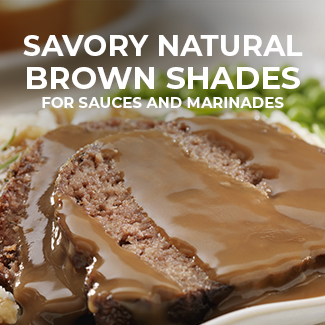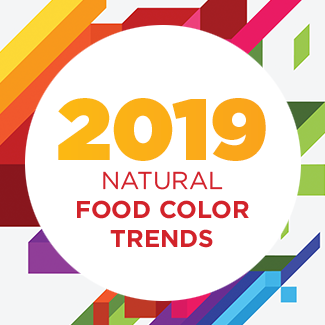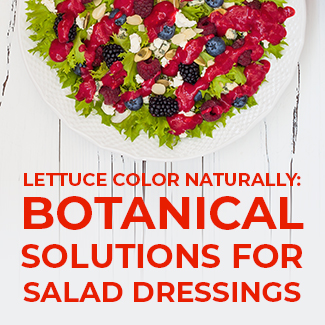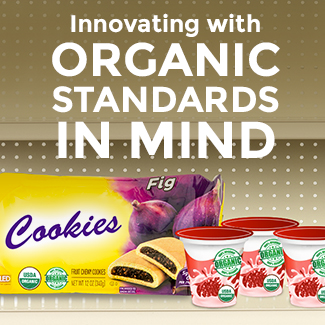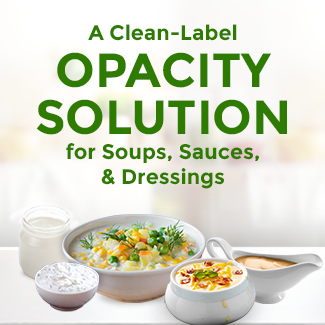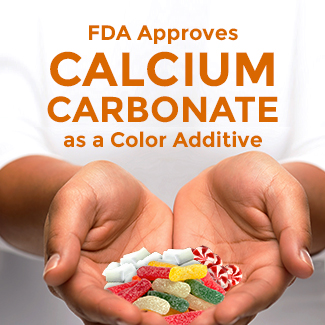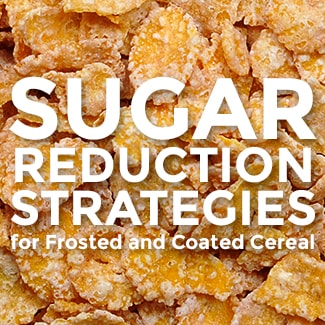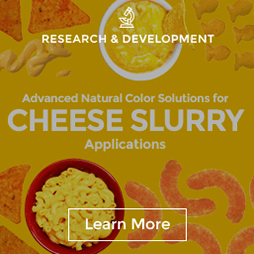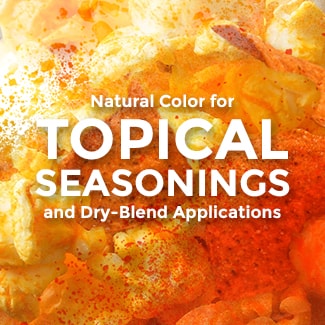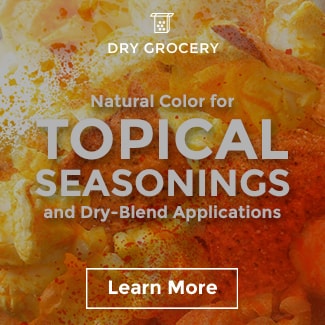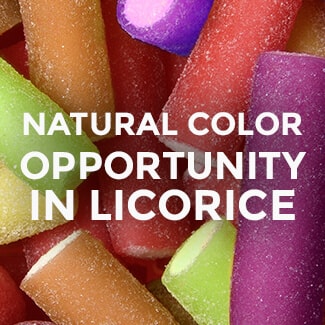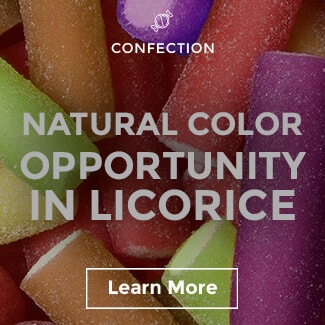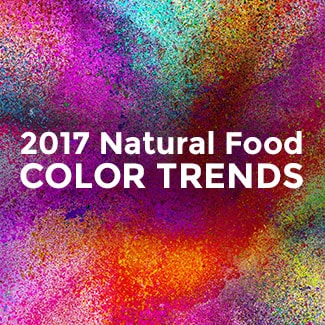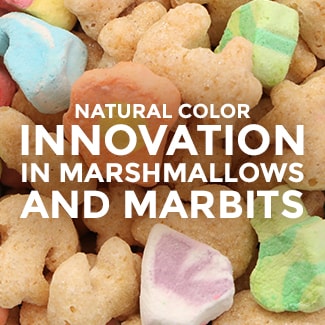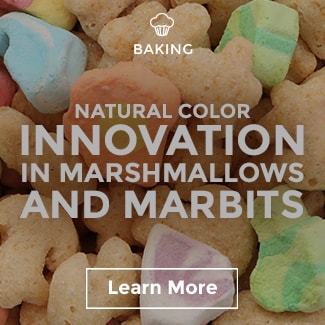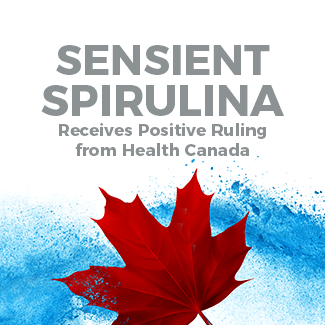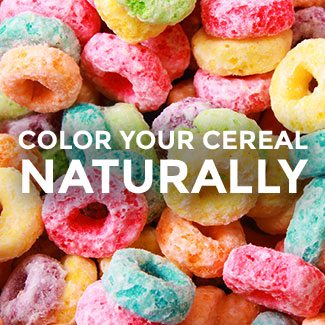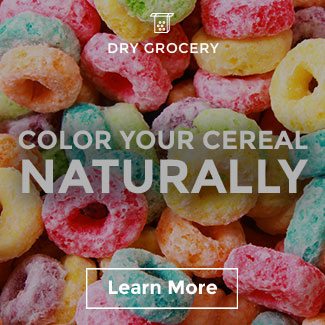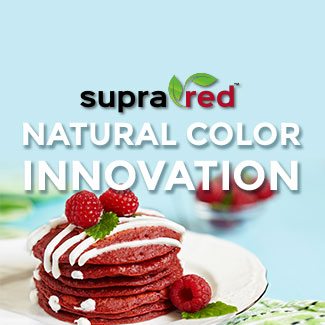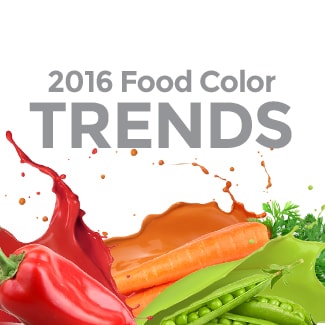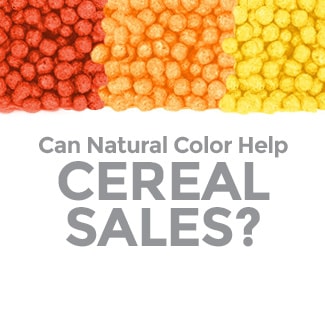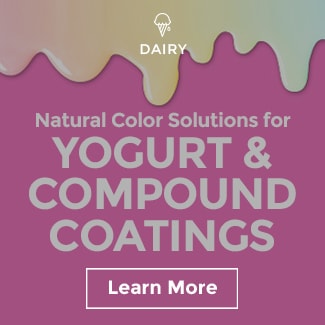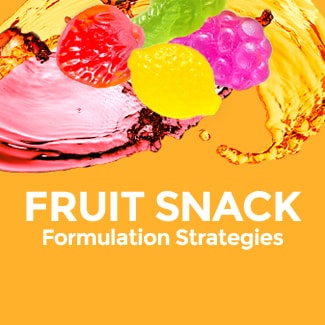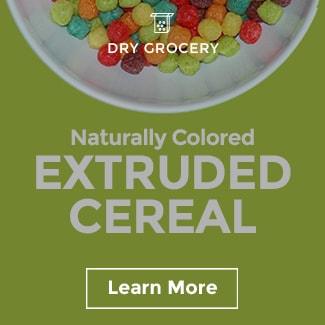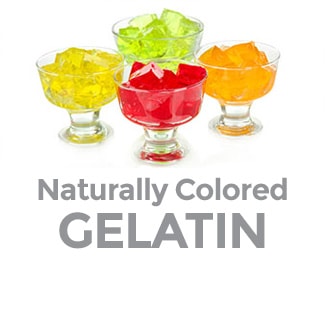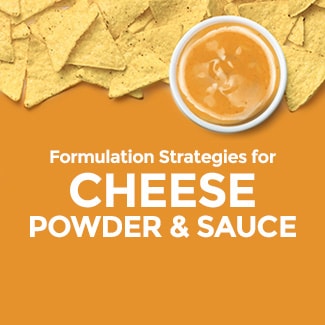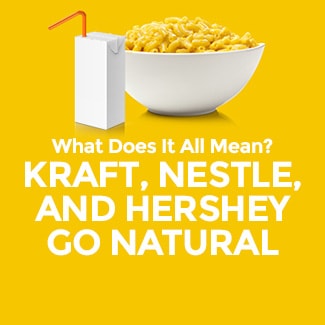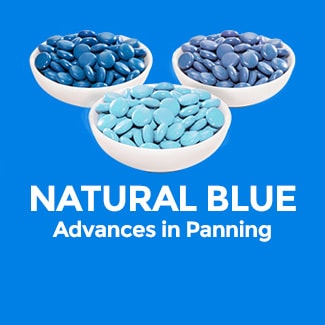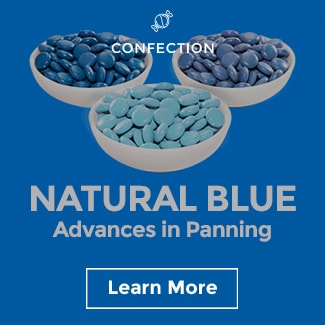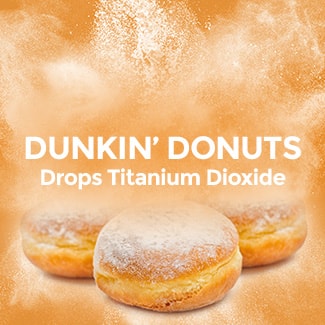Natural Color for Panned Baking Gems
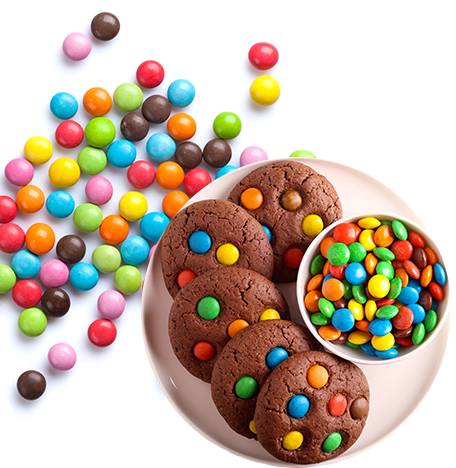
As consumers seek value and experiences through their food and beverages, incremental indulgence through snacks and sweets like baked goods are in vogue.
Half of US consumers say texture is an important part of the overall experience of eating desserts (Mintel 2024), so inclusions like panned gems can be a major feature for baked goods.
Naturalness is also a leading expectation. Today, 30% of Canadian consumers “all natural” is an important health-related attribute when choosing baked goods to eat (Mintel 2024).
When choosing natural colors to create interesting and appealing panned gems for baked goods, developers should keep several factors in mind.
Getting Started: What to Consider for
Panned Gems in Baked Goods
When selecting colors to use in panned gems for baking, the type of panning is important. The difference between sucrose-based panning and dextrose/sugar-free panning indicates which color families can be used based on acidity and stability. The low pH of sucrose panning means that manufacturers must have tight control over their process, while dextrose may be more forgiving.
Heat is another important aspect. Some manufacturers hold their sugar syrup hot, while others hold their syrup at room temperature. If gems are going into a baked good before baking, the color needs to be heat-stable for that process as well as the panning process.
In panning, usage rate/weight gain can also be impactful. If a manufacturer has a usage rate restriction in their sugar syrup as well as a certain number of coats or weight gain they want their candy pieces to have, the use of high strength colors can be an advantage to achieve bright target shades.

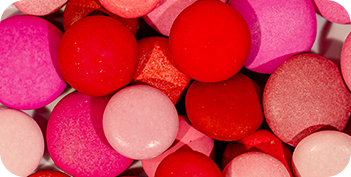
Red & Pink
Beet-based solutions can offer a range of reds in panning. For bright reds and hot pinks to replace Red 3, developers often look to carmine or anthocyanins like Sensient’s Pure-S™ Red.
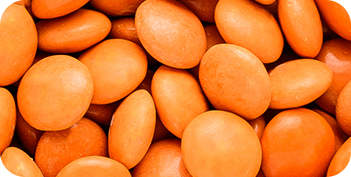
Orange
In panning, the most common orange solutions we recommend are paprika and beta carotene, which together cover a wide range of shades.

Yellow
Turmeric is a great option for bright yellows in panning. If light stability is a concern, beta carotene offers a wider range of yellow hues as well.
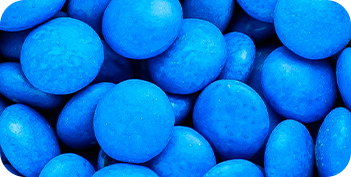
Blue
Sensient’s Marine Blue™ is an ideal solution for panned gems, a spirulina-based option which has been stabilized to survive the baking process for this application. A pH-adjusted anthocyanin can also provide blue hues for gems.
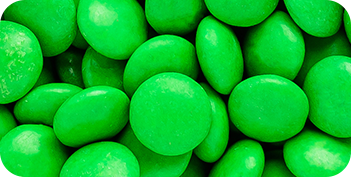
Green
Blending natural blues, like a pH adjusted anthocyanin or Marine Blue™, with natural yellow solutions, like beta carotene or turmeric, creates a range of green hues at different usage rates.
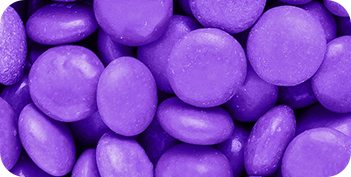
Purple
Blue carmine offers a stable purple in panned gems, but developers can also look to anthocyanins in this application. A blend of spirulina and beet juice can also be used to achieve specific shades.
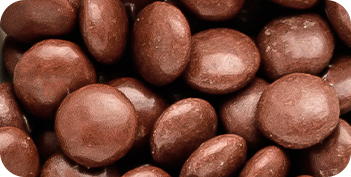
Brown
For strong brown hues without Prop 65 warnings in panned gems, Sensient’s caramel-free Sienna™ line and associated blends offer a complete range of shades.
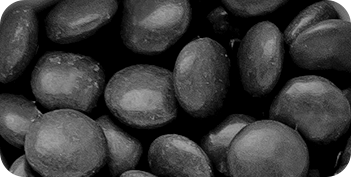
Black
Black iron oxide offers a stable black option for panned confections, but blends of natural colors like those in the Sienna™ line and others from our rainbow above can be used to achieve black hues as well.
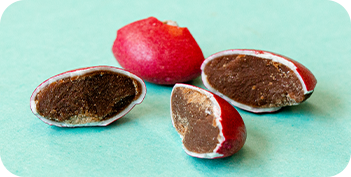
White
While titanium dioxide is an industry standard solution for white layers in panning, Sensient’s Avalanche™ portfolio includes solutions specifically developed to create bright white in panned gems and other panned confections with a clean label.






